These 7 fire-retardant plants may help save your home
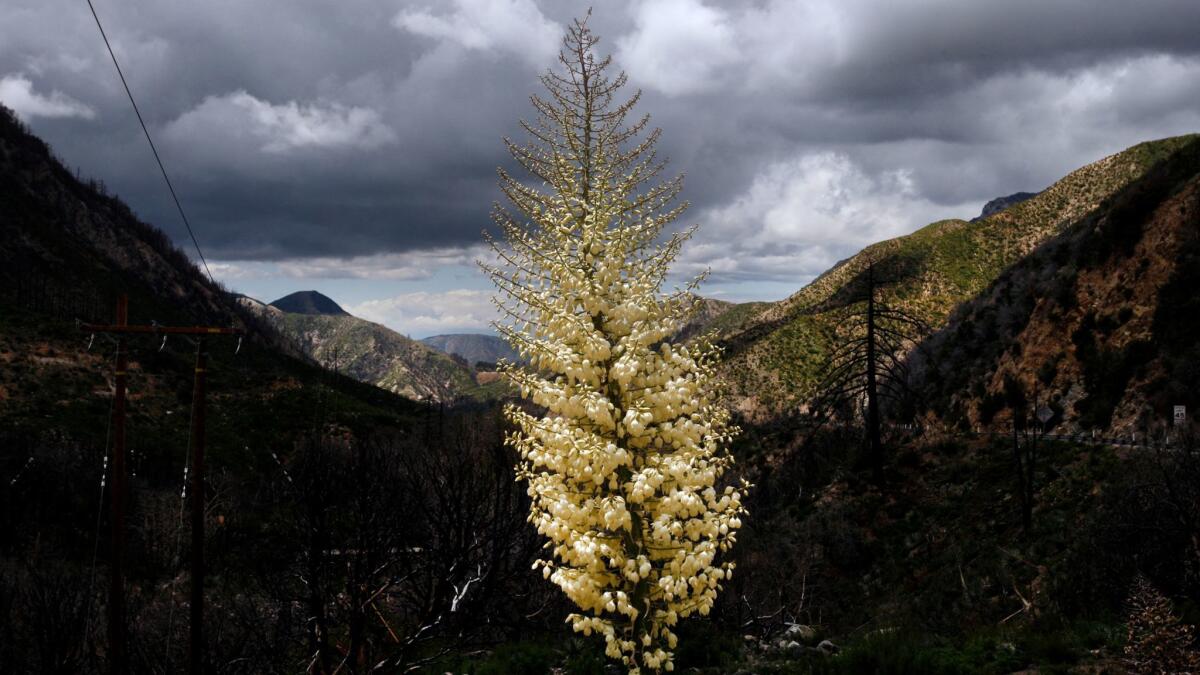
Consider all the potential solutions to help save your home during a wildfire and landscaping seems an obvious choice.
But are the drought-tolerant solutions that many of us have already implemented – turf removal among them – enough to fend off fire?
According to landscape designer Cassy Aoyagi, president of FormLA Landscaping, choosing plants that are authentic to our region is one way to help slow advancing fire.
“Many native plants take longer to burn than some of the invasive weeds such as pennisetum and pampas grass,” Aoyagi says.
Non-native invasive plants such as the wild mustard that took over Los Angeles hiking trails last spring help to promote fire. “It’s like kindling,” Aoyagi adds. “What we need are authentic landscapes — landscapes that are natural to this place — that will make us more resilient [to fire, slides, floods] and give us a look that is ours alone.”
To combat invasive plants that may blow in from your neighbor’s yard, Aoyagi recommends using smart irrigation rather than overhead spraying (this leads to germination), heavy mulching and ground covers.
Aoyagi views the recent La Tuna fire, which destroyed five homes and scorched more than 7,000 acres, as an opportunity to talk about how our landscape affects natural disasters.
The key, she says, is to be authentic and to think about what comes after the wildfires.
“If a sumac burns, its roots are still intact,” explains Aoyagi. “When it rains, which we know it will soon, those living roots will retain slopes. In contrast, pennisetum has shallow roots that won’t provide much protection. Natives, like sumac, will also recover faster. Basically, natives protect us through the ups and downs of our climate. They are adapted to 100-year droughts, floods, as opposed to the plants we’ve been using.”
Here, Aoyagi describes seven of her favorite fire-resistant natives that are particularly useful in supporting L.A.’s fire resilience.
Buckwheat
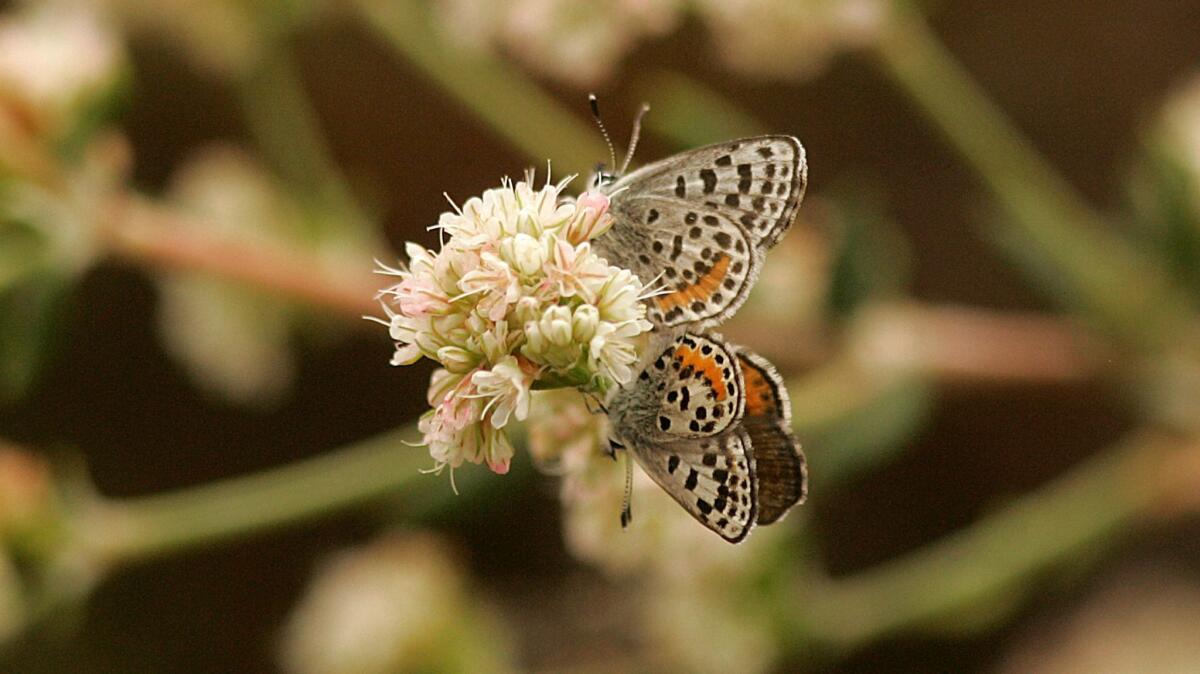
There are so many buckwheats, all with a distinctive beauty. The common ground is remarkable, pom-pomlike blooms.
Lemonade berry
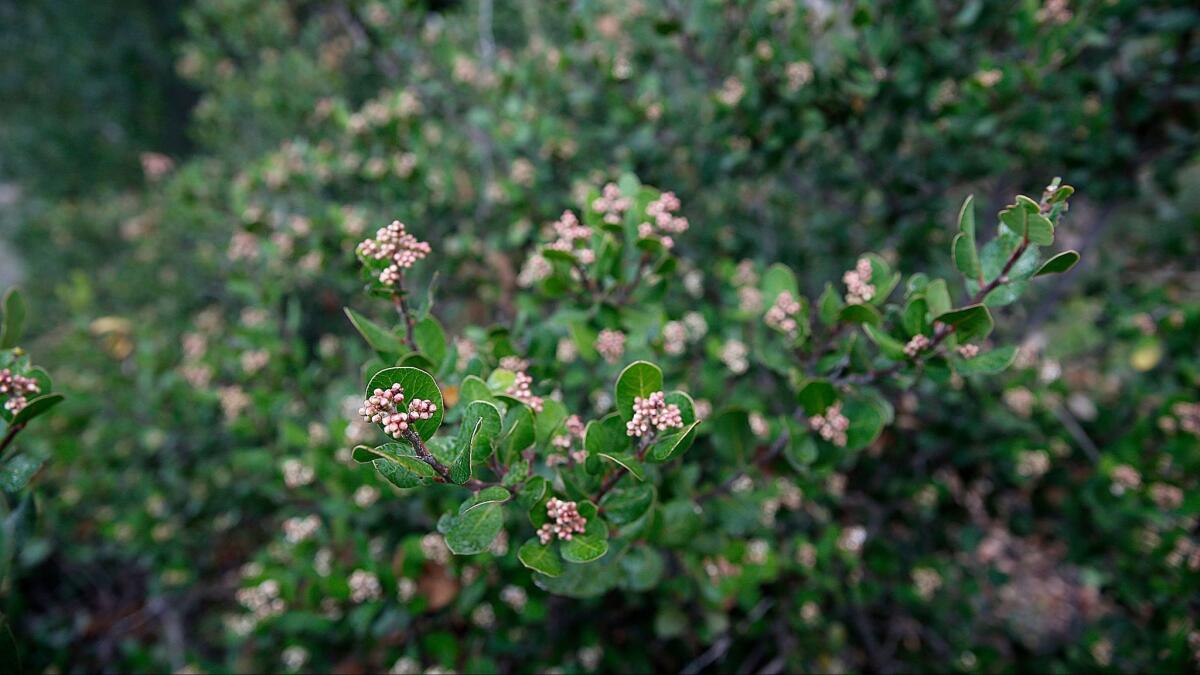
Also an edible, lemonade berry makes a great hedge substitute. You can make a nice, tart tea from its berries.
Oak
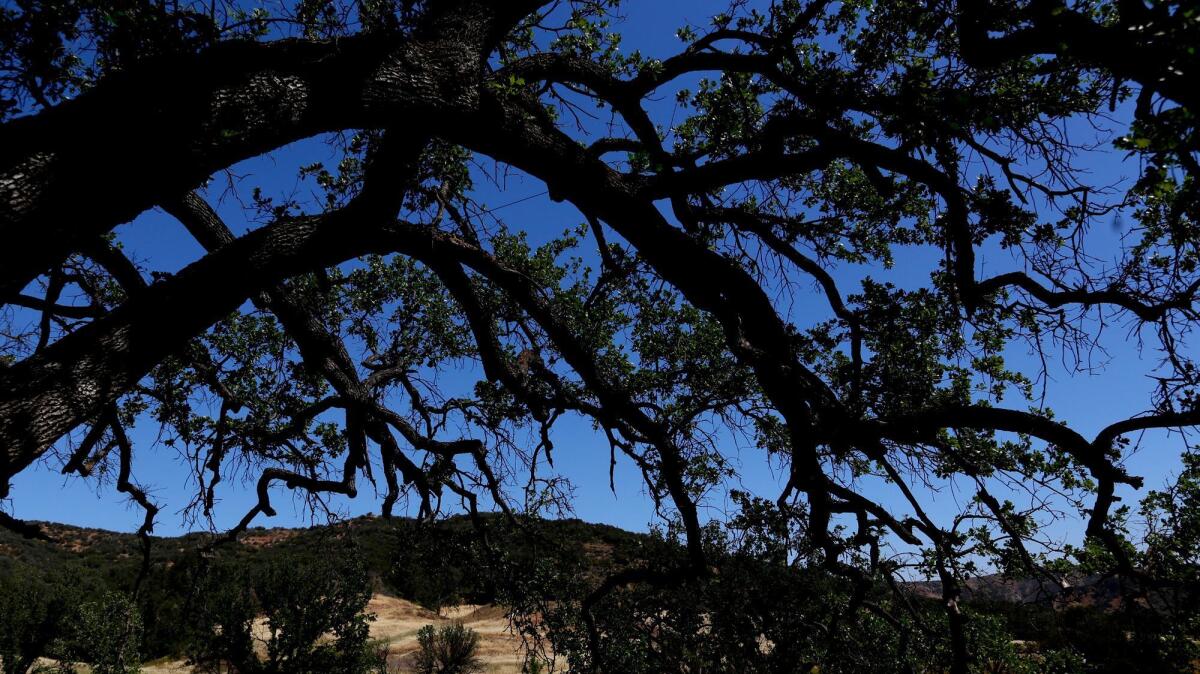
Oaks are one of California’s truly iconic trees. In addition to aiding fire resilience, their expansive canopies can cool our communities. Placed correctly, they can ower air conditioning costs by about 50%.
Manzanita
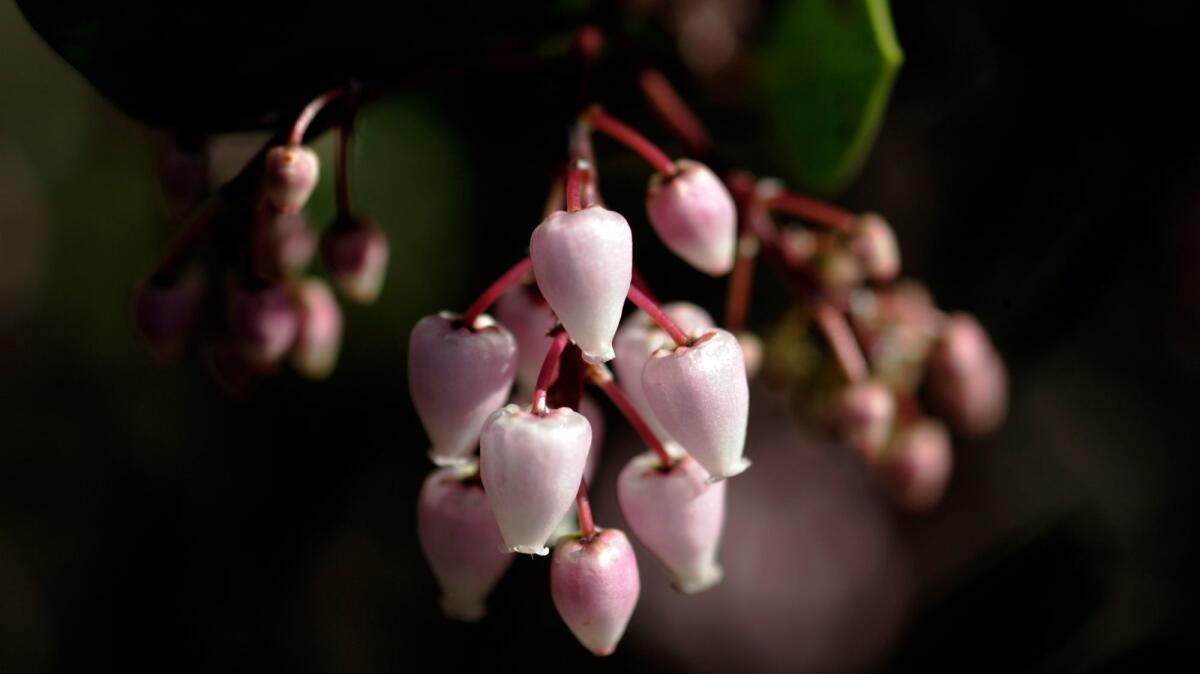
Even when its evergreen foliage is burned away, manzanita’s resilient trunks and branches have an architectural beauty that is hard to match. As if that weren’t enough, it is edible.
Woolly blue curl
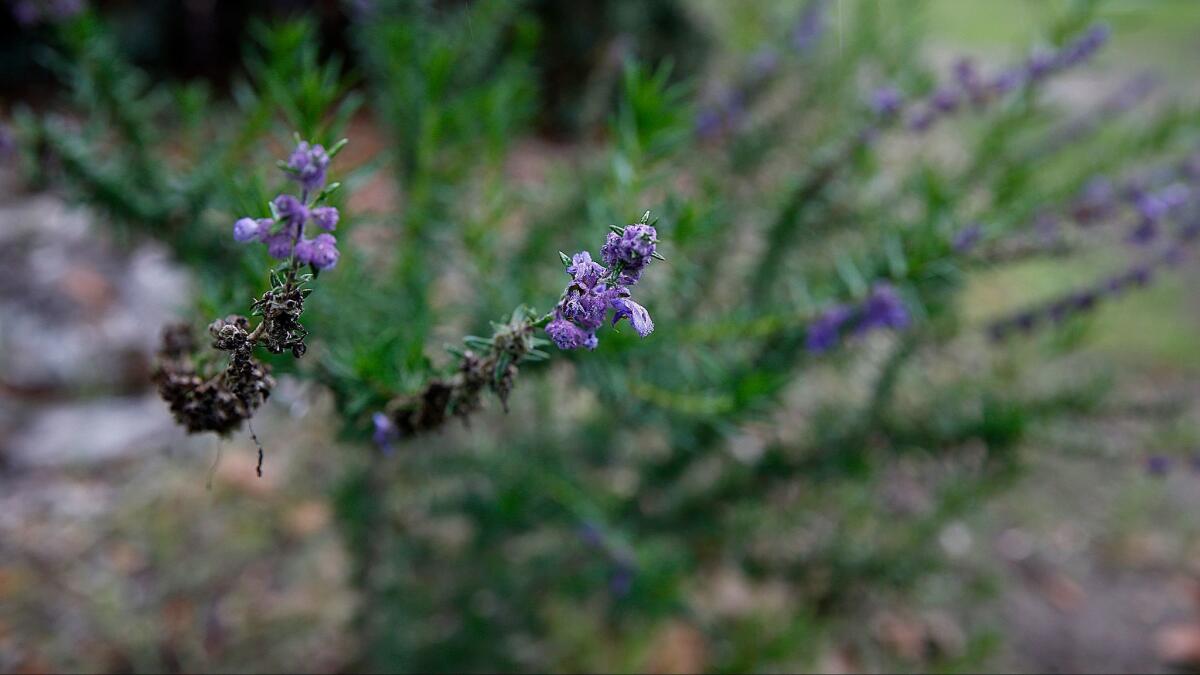
Woolly blue curls is a highly fragrant, 3- to 4-foot evergreen shrub with violet flowers in fuzzy spikes. Again, so beautiful.
Catalina cherry
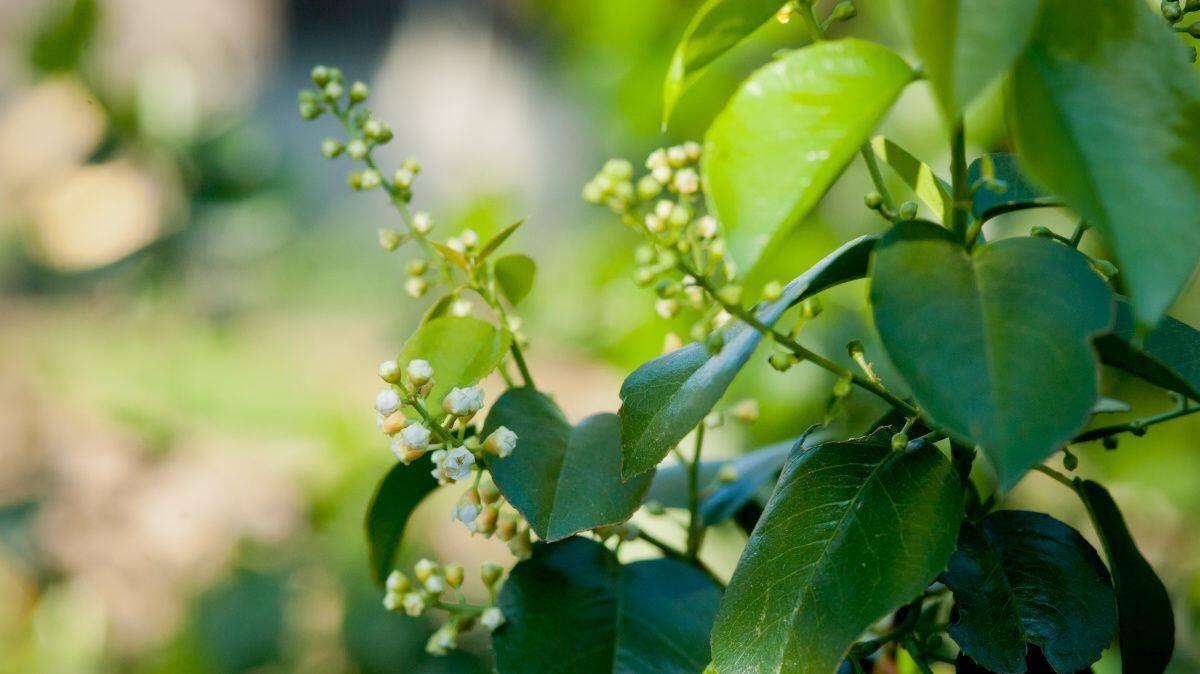
Wildlife love the berries, and so do we.
Yucca
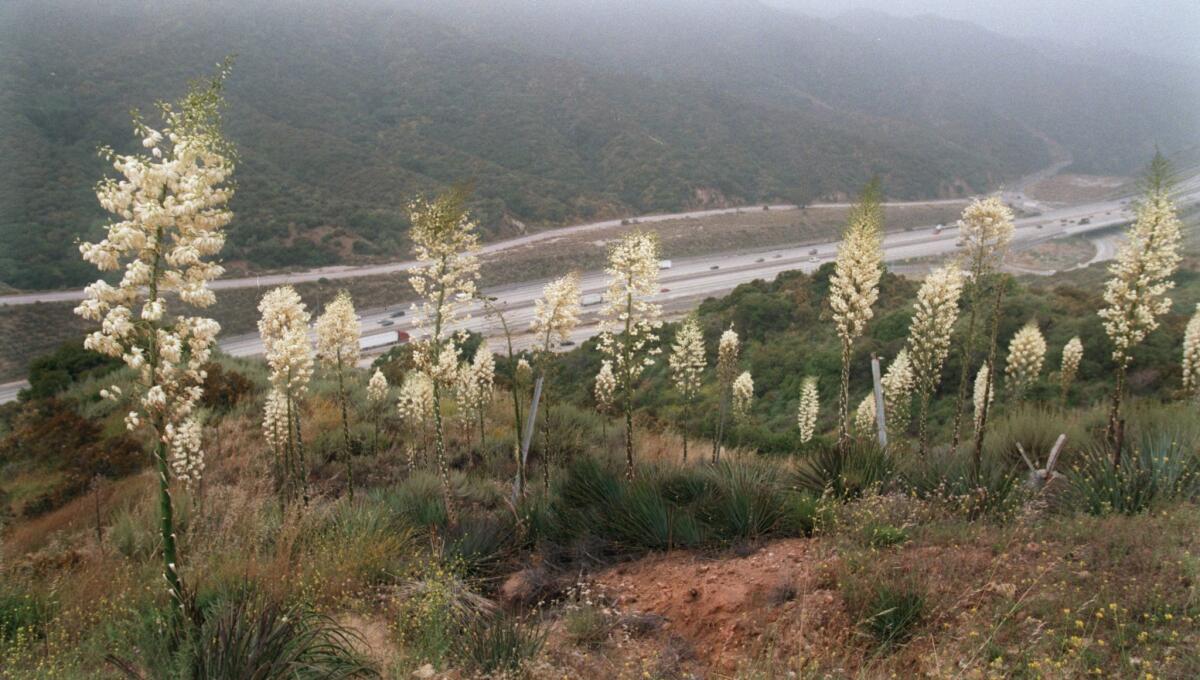
Our Lord’s Candle is already beginning to sprout in the area burned in the La Tuna fire. The yucca has an almost iridescent quality when in bloom. Virtually every bit of it is edible at some point during the year. It is a great aesthetic exchange for those who like the look of pampas grass.
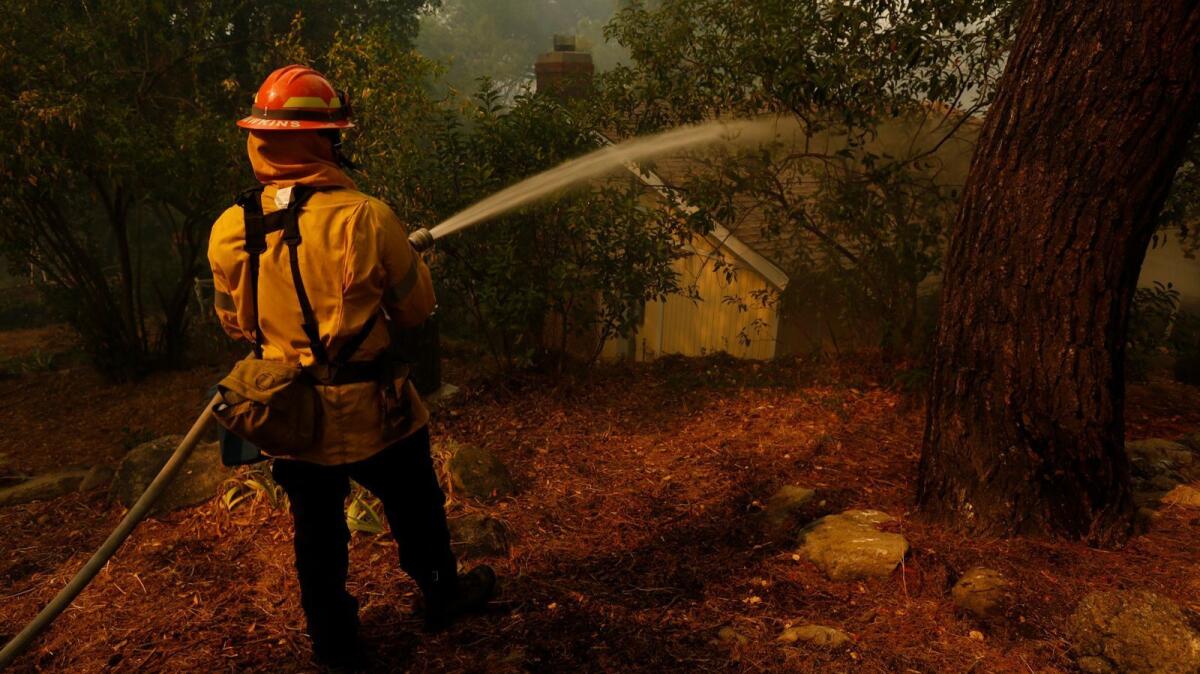
Here are some smart examples of putting native, fire-retardant plants to good use:
Authentic Foothill Gardens, Sierra Madre City Hall: Installed two years ago, the foliage in the fire garden adjacent to the fire station will look like it will in a residential garden, as it is on a smart irrigation system. The foliage is varied in color, lush and leafy, and performs year round. SierraMadreGardens.com.
Sunland/Tujunga Welcome Garden: A community project led by Roger Klemm removed highly invasive grasses that had been proactively planted at the intersection of the 210 and Foothill Boulevard. The garden now showcases the best of the more than 300 heat- and drought-resilient species native to the area, including those from coastal sage scrub, chaparral, and oak woodland communities. Sunland Welcome Nature Garden
Sunland/Tujunga Fire Station: This now 100% native garden is the result of an Eagle Scout Project by Travis Whitcomb. It includes a specimen oak that shades the station and more than 70 native plants ideally suited to high-heat and fire-prone areas like Sunland. It now stands in vibrant contrast to the charred hillsides consumed by the La Tuna fire.
Rosemont Preserve: Mostly preserved and unaltered space, however, Arroyos and Foothills Conservancy swapped invasive plants for fire-resistant and slope-retaining natives last year in an effort to protect nearby homes from fire and slides. arroyosfoothills.org/rosemont
Source: FormLA Landscaping
Twitter: @lisaboone19
For an easy way to follow the L.A. scene, bookmark L.A. at Home and join us on our Facebook page for home and garden design, Instagram, Twitter and Pinterest.
ALSO:
Inspiration -- and tips -- for drought gardening
La Tuna Canyon fire road leads to views of city, peaks, even the ocean
